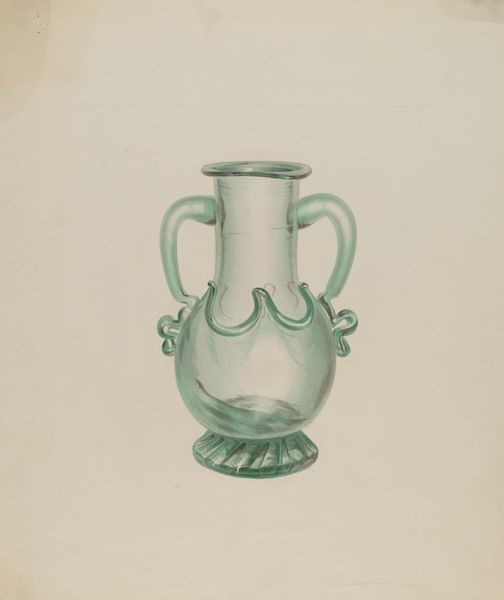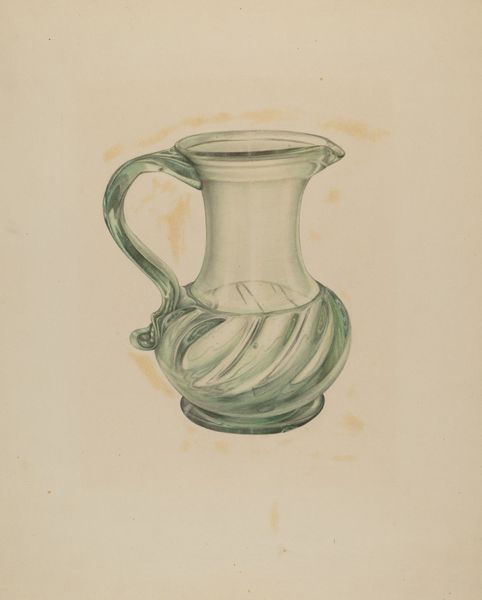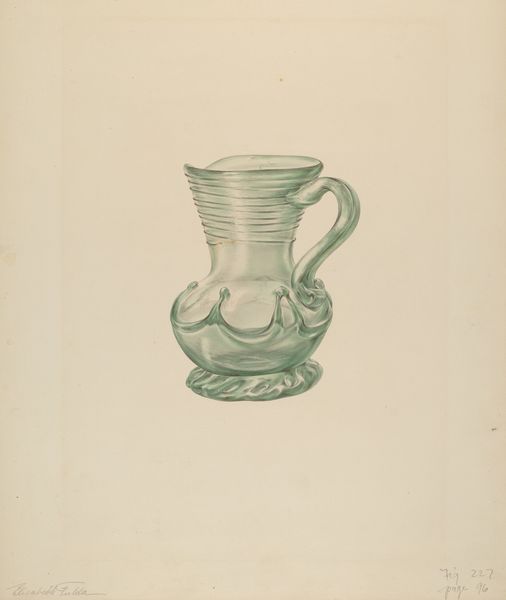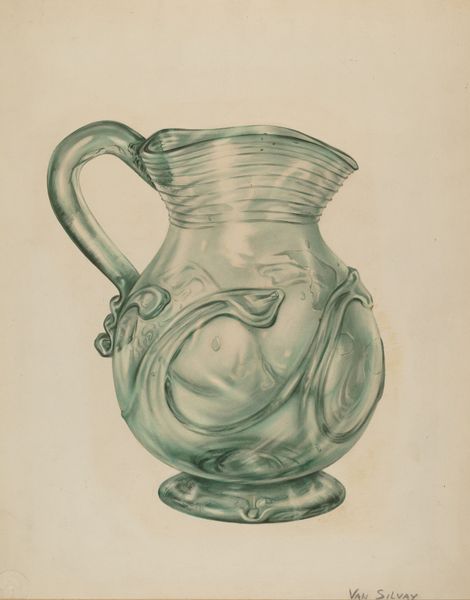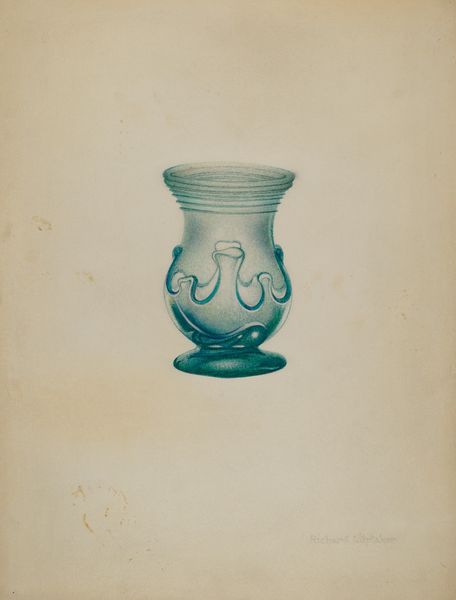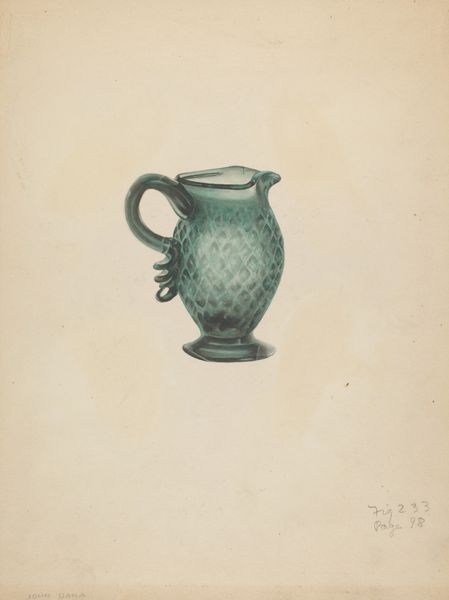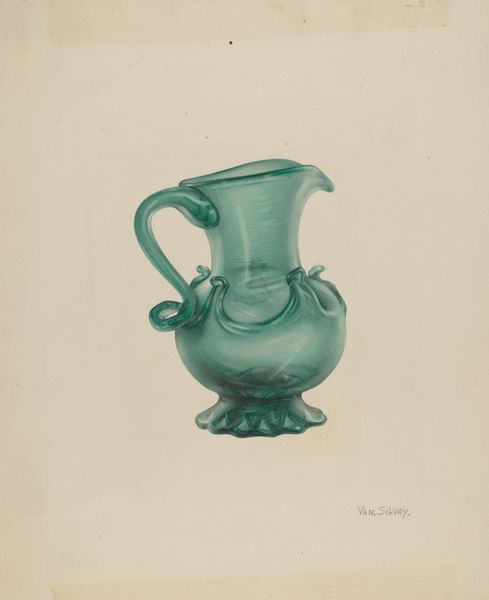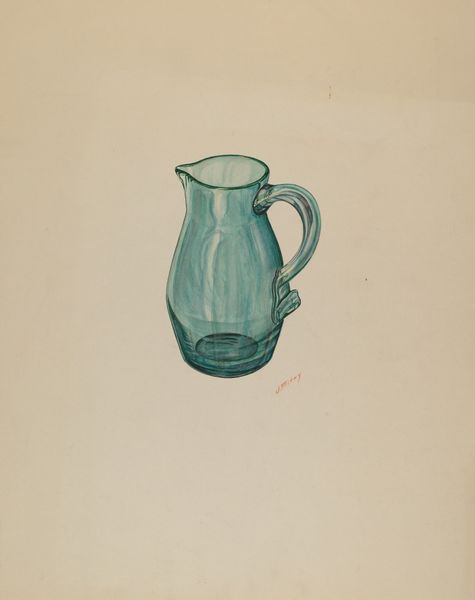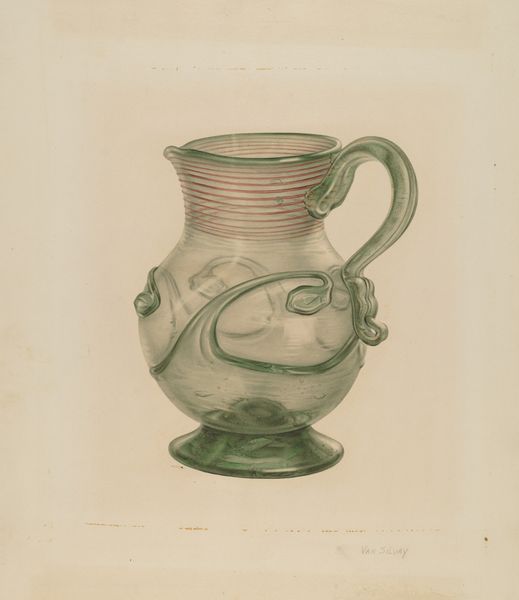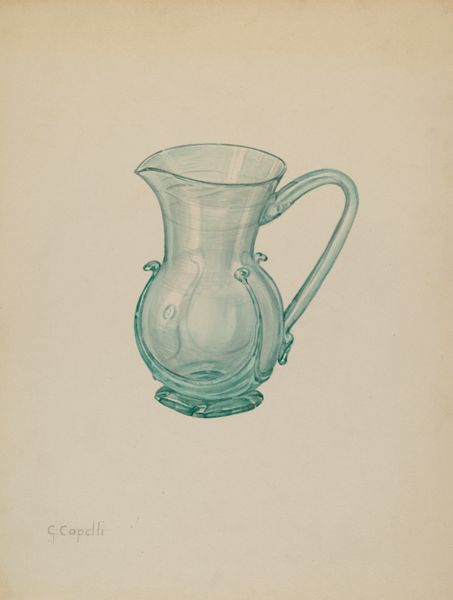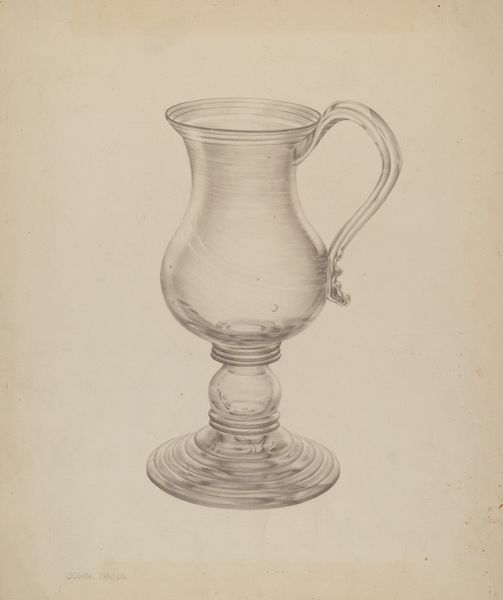
drawing, watercolor
#
drawing
#
watercolor
#
coloured pencil
#
watercolor
Dimensions: overall: 36.1 x 27 cm (14 3/16 x 10 5/8 in.)
Copyright: National Gallery of Art: CC0 1.0
Curator: Immediately striking. A sense of tranquility just radiates from it, doesn't it? Editor: Absolutely. We're looking at "Vase" by Van Silvay, created around 1940. The medium is watercolor and drawing, including the use of coloured pencil as well. It feels almost ghostly, in its simplicity and elegance. But let’s talk about that construction, the physical act of rendering it. Curator: Yes, consider Silvay's technique. The subtle layering of the watercolor, combined with what appears to be deliberate pencil work, seems to mimic the translucent nature of the glass. There's an interesting tension between the flatness of the paper and the illusion of depth. What choices led to this visual experience? Editor: And it is precisely those choices that invite us to delve into the history of domestic still life during this period. Think about the burgeoning middle class and the increased availability of such objects and art, that allowed access to the beauty of the object without having to acquire it in actuality. Curator: Fascinating! You're suggesting this work engages with the social aspirations tied to ownership. It definitely makes me wonder about the intended audience for Silvay's work, what function it performed. Perhaps it acted as a form of accessible luxury or maybe it provided instructional resources, where art offered visual guides, educating on the cultural norms of material appreciation? Editor: Precisely. Museums often served such function, exhibiting scenes of bourgeois domesticity, setting standards to inspire its visitors with an understanding of good taste. Was Silvay's artwork responding or perhaps participating in it? Considering the prevalence of watercolour, was it the ideal medium because it was an exercise in control, creating illusion and desire? Curator: It leaves a lot to the imagination. I'm particularly drawn to how the artist handled light and shadow to evoke the sheen and form of glass. This makes me contemplate the role of artistic labor and consumerism. Was it merely representation or active promotion of materiality? Editor: Ultimately, both may have come into play. A commentary on cultural capital intertwined within an aesthetic exercise. Curator: It really prompts one to rethink the boundaries of how we determine a visual and a culture’s reflection. Editor: I'll certainly consider it from a more socio-economic viewpoint from now on.
Comments
No comments
Be the first to comment and join the conversation on the ultimate creative platform.
